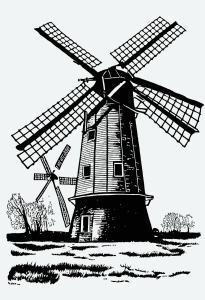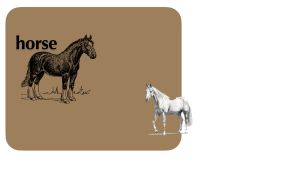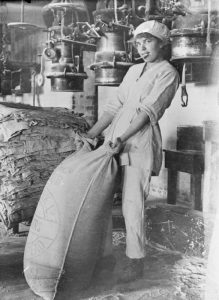There is no shortage of examples of horses travelling to WWI battlefields, only to be shipped out as carrion within a month, if that. The British army had been working on mechanised replacements to haul heavy artillery pieces, for the best part of a decade. It would only be fair to give the military engineers credit for their efforts to minimise internal rows, and soldier on to modify the original design through two or three iterations by the end of the first world war. Thousands of horses still died in the process, but there was an end in sight to mass equine butchery.
 This could not come too soon, as inter-war businesses set about restoring their delivery systems. When trying to track the development of value in the pricing of bread and bakery goods, the editor of Industrial Peace, Major W Melville, conceded that the public grasp of the price structure was “little understood”. The only accessible estimates came from the Linlithgow Report and started outside bakeries with the purchase of sacks of flour. From the plains of north America, the vast expanses of Australia, to the more modest arable holdings of England, Linlithgow collects the entire growing stage of breadmaking flour into a single undifferentiated lump.
This could not come too soon, as inter-war businesses set about restoring their delivery systems. When trying to track the development of value in the pricing of bread and bakery goods, the editor of Industrial Peace, Major W Melville, conceded that the public grasp of the price structure was “little understood”. The only accessible estimates came from the Linlithgow Report and started outside bakeries with the purchase of sacks of flour. From the plains of north America, the vast expanses of Australia, to the more modest arable holdings of England, Linlithgow collects the entire growing stage of breadmaking flour into a single undifferentiated lump.
 The disadvantages of average returns are there for all to see. Melville put it like this: “No evidence offered in respect of price structure of flour. My inquiry begins at the point at which the baker buys his flour from the miller.” The opening price of breadmaking flour in January 1923 was 42 shillings and a penny. There is no indication of whether this should be taken as an “asking” price or a “taking” price, as given in a trade paper, meaning that flat pricing goes out of the window, speeded on its way by discounts applied at strategic order volumes. The figures discussed in the Linlithgow report were fixed during a time when flour prices were starting to fall, leaving a number of question marks over the validity of 42 shillings and a penny as a credible price for a sack of flour at this time.
The disadvantages of average returns are there for all to see. Melville put it like this: “No evidence offered in respect of price structure of flour. My inquiry begins at the point at which the baker buys his flour from the miller.” The opening price of breadmaking flour in January 1923 was 42 shillings and a penny. There is no indication of whether this should be taken as an “asking” price or a “taking” price, as given in a trade paper, meaning that flat pricing goes out of the window, speeded on its way by discounts applied at strategic order volumes. The figures discussed in the Linlithgow report were fixed during a time when flour prices were starting to fall, leaving a number of question marks over the validity of 42 shillings and a penny as a credible price for a sack of flour at this time.
more follows later…
Wednesday September 10
It has taken a long time to work out the interaction of resources and the sequence of events that generated an avalanche of cash for European and American motor manufacturers in the 1920s. Unpacking the topic is a slow business: so many numbers to crunch combined with a need to understand the different assumptions that accompany the costings of equine and automotive modi operandi. From Georgian times and much of the Victorian era, London had a working horse population of more than a quarter of a million animals, that came with significant food and stabling requirements. Extending these planning requirements to the rest of the horse population, noticeably in ports and cities across the country, There was no way equine transport would ever be cheap in the way railways rapidly became.
Friday September 12
-Let us start by unravelling the requirements of industry in general. Profitability, as Henry Ford went on to demonstrate with his Model T series, could be generated by scaling up the manufacture of a basic product, particularly if it delivered scope for adaptations on its way to the customer. The carrriagemakers of the day imagined that they were safe from the rigours of change, but their dreams turned to dust. Once-revered craft skills were cast into obscurity, lost in the cut and thrust of sparring markets, consigned to history.


 This could not come too soon, as inter-war businesses set about restoring their delivery systems. When trying to track the development of value in the pricing of bread and bakery goods, the editor of Industrial Peace, Major W Melville, conceded that the public grasp of the price structure was “little understood”. The only accessible estimates came from the Linlithgow Report and started outside bakeries with the purchase of sacks of flour. From the plains of north America, the vast expanses of Australia, to the more modest arable holdings of England, Linlithgow collects the entire growing stage of breadmaking flour into a single undifferentiated lump.
This could not come too soon, as inter-war businesses set about restoring their delivery systems. When trying to track the development of value in the pricing of bread and bakery goods, the editor of Industrial Peace, Major W Melville, conceded that the public grasp of the price structure was “little understood”. The only accessible estimates came from the Linlithgow Report and started outside bakeries with the purchase of sacks of flour. From the plains of north America, the vast expanses of Australia, to the more modest arable holdings of England, Linlithgow collects the entire growing stage of breadmaking flour into a single undifferentiated lump. The disadvantages of average returns are there for all to see. Melville put it like this: “No evidence offered in respect of price structure of flour. My inquiry begins at the point at which the baker buys his flour from the miller.” The opening price of breadmaking flour in January 1923 was 42 shillings and a penny. There is no indication of whether this should be taken as an “asking” price or a “taking” price, as given in a trade paper, meaning that flat pricing goes out of the window, speeded on its way by discounts applied at strategic order volumes. The figures discussed in the Linlithgow report were fixed during a time when flour prices were starting to fall, leaving a number of question marks over the validity of 42 shillings and a penny as a credible price for a sack of flour at this time.
The disadvantages of average returns are there for all to see. Melville put it like this: “No evidence offered in respect of price structure of flour. My inquiry begins at the point at which the baker buys his flour from the miller.” The opening price of breadmaking flour in January 1923 was 42 shillings and a penny. There is no indication of whether this should be taken as an “asking” price or a “taking” price, as given in a trade paper, meaning that flat pricing goes out of the window, speeded on its way by discounts applied at strategic order volumes. The figures discussed in the Linlithgow report were fixed during a time when flour prices were starting to fall, leaving a number of question marks over the validity of 42 shillings and a penny as a credible price for a sack of flour at this time.